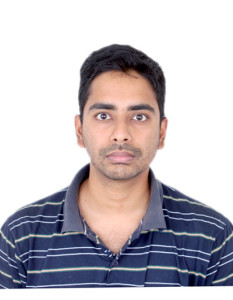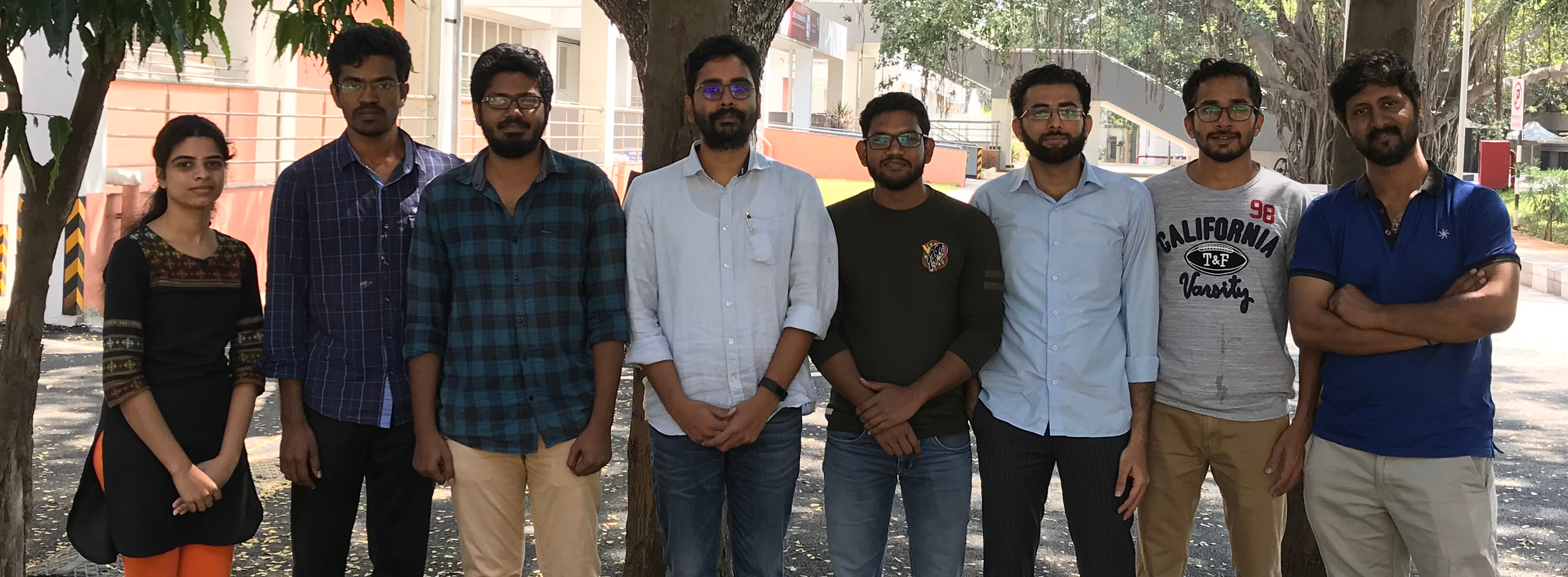HPCE Highlight

|
Varunkumar S.Department of Mechanical EngineeringAreas of interest:Combustion-acoustic instabilities in propulsion systems, thermo-chemical conversion of biomass and coal |
Varunkumar S. is an Assistant Professor at the Department of Mechanical Engineering. He completed BTech from NIT Trichy and received PhD from Indian Institute of Science, Bangalore in 2012. Post-PhD, he worked as a research associate at IISc and as Assistant professor (on contract) at IIT Ropar, Punjab, before joining IIT Madras in 2013. He is a recipient of Prof. Chintakindi V Joga Rao Medal for the Best Thesis in Aerospace Engineering at IISc for the year 2012 -- 2013.
How does your group keep HPCE cluster busy?
We use HPCE cluster for simulating dynamic coupling of unsteady fluid flow and combustion in propulsion systems to track the temporal and spatial evolution of perturbations (principally acoustic pressure waves). The results of these simulations enable establishing, quickly and without the need for expensive testing, the stability of rockets and air-breathing propulsion systems. In the past, we have used results from such simulations performed on the HPCE cluster to uncover the origin of what is called the DC shift, a catastrophic instability, in tactical solid propellant rockets. That the DC shift is caused by the dramatic re-ignition of the propellant followed by the rapid depressurization-caused extinction was convincingly shown, for the first time, by combining a theoretical model with CFD simulations performed on the HPCE cluster. Currently, we are using the HPCE cluster to understand such dynamic coupling mechanisms in liquid propellant rockets and gas turbine afterburners. On the other end of the spectrum of research problems in combustion, we are also currently using the computing facility to understand stabilization mechanism of flames of high-ash Indian coal in a re-circulating flow and the structure and extinction of non-premixed syngas flames. These problems have applications in the design and development of thermo-chemical conversion-based devices for the efficient utilization of coal and biomass.
How do you see HPCE landscape in the domain of your research area change over the years?
In the past, computing was mostly used for understanding the static behavior of combustion processes in propulsion systems. High fidelity CFD calculations for such applications could be performed with less than a few thousand hours of CPU time. The need for understanding and more importantly, the need for a priori prediction, of the dynamic behavior of propulsion systems poses a great challenge to the propulsion research community. High-fidelity calculations needed for designing dynamically stable propulsion systems will require tens of millions of CPU hours, but will still be much cheaper than the practices used in the pre-CFD times. High performance computing and CFD, if not already, will become the workhorse tools for practitioners in this field in the near future.
What would you suggest to new faculty members and new students in your research area?
While it is indeed true that spectacular feats have been accomplished in chemical propulsion in the past, it is important to keep in mind that it has come at an enormous cost. Intuitive reasoning and expensive and time consuming tests have enabled development in the past. But the need of the hour is cheap access to space (for communications, remote sensing and space travel) and therefore, the luxury of extensive testing, which for instance, enabled much of the development during the space race between USA and USSR, is not available today. Judicious use of theory and computing can help us bridge decades of gap with the other space-faring nations and perhaps even let us lead in the coming times.
HPCE Highlight showcases the work of IIT Madras faculty members and their groups in High Performance Computing. It is powered by HPCE, Computer Center, IIT Madras.
